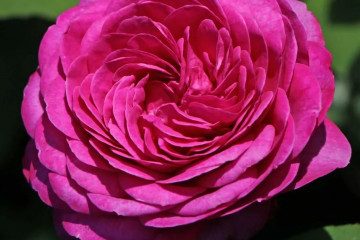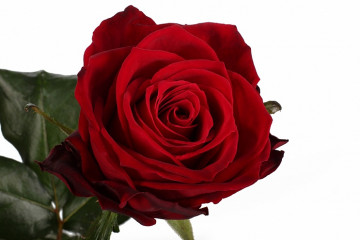Rose Larissa (Larissa) - what kind of floribunda is it?
Content:
Rose Larissa (Larissa, KO 98 / 1661-05, KORbaspro) is a strong, tightly closed plant about 70 cm high with small green leaves. Variety bred by Kordes (Germany) in 1998. Participant of many rose contests and winner of world awards. The article tells about the peculiarities of the variety, how to properly plant a plant and take care of it.
Brief description, characteristic
A flower from the floribunda group with an energetic character, but has growth characteristics, according to which it belongs to bush and even ground cover (undersized plants, sometimes creeping). Thanks to such qualities and the ability of continuous lush flowering, rose Larissa creates flower carpets.
Terry inflorescences of cream and pink color look gorgeous. The flowers contain up to 75 petals and are shaped like a rosette.
Rosa Larisa has many positive differences:
- abundant flowering;
- resistance to precipitation;
- the plant is not susceptible to disease;
- has the ability to self-clean from the harmful effects of the polluting environment;
- rose is unpretentious to cultivation conditions.
The disadvantages include:
- some sloppiness created by rapidly growing shoots;
- rapid burnout (loss of color intensity) of flowers from sunlight.
Use in landscape design
Rose Larissa is eminently suitable as a decoration for any territory.
The beauty, tenderness, shape of flowers are perfect indicators for use in landscape design. The improvement of streets, parks and gardens from the beginning of summer to late autumn is the lot of the Larissa rose. Plus, it doesn't require much maintenance.
Growing a flower
The plant is endowed with such powerful force by nature that a significant increase is noticeable in a short time. This is observed even during the cultivation of it as a planting material.
The survival rate of the Larissa variety is good and beautiful strong seedlings are obtained already in the first year of life. Later, real bushes with unimaginable flowering are quickly formed at the permanent place of cultivation.
According to the descriptions of the owners, spring planting of seedlings is mainly practiced.
Location selection
Roses need good lighting. It gives the plant strength for growth and flowering, protects against diseases.
The place, lit from dawn to dusk by the sun, will become a real home for roses. Penumbra will stretch the plant in length and deprive many of the inflorescences. And in the shade, the roses are threatened with slow death.
Exposure to sunlight has an effect on disease and pest resistance and is more effective than chemical treatment.
How to prepare the soil and flower for planting
The mechanical composition of the soil is as important as light. The ground for filling the pits must be prepared in advance, prepare the soil mixture.
For this, it is taken:
- fertile soil, you can from the beds - 2 buckets;
- humus, sand and peat, sod land 1 bucket each;
- clay lying on the surface - 0.5-1 bucket;
- bone meal and wood ash 2 cups each;
- mineral fertilizers - 1-2 handfuls.
The plant also needs to be cooked:
- slightly update root cuts;
- shorten the shoots a little.
Planting procedure step by step
The easiest way to plant is with a few classic tricks:
- The prepared soil mixture is loaded onto the bottom of the hole in the form of a slide.
- A seedling is lowered into the hole.
- On the formed slide, the roots are straightened, not allowing them to bend up.
- The embedding depth is oriented at the place of budding (grafting), dropping 3-5 cm below the soil surface.
- The root system is covered with the prepared mixture.
- First compact the soil with your hands and then trample it down.
- The last step is watering abundantly.
After absorbing water, check the result. In case of subsidence of the earth, the seedling should be raised, add the ready-made mixture and huddle. Shade should be provided for about 2 weeks. Trace constantly the moisture content of the soil.
Plant care
Rose varieties Larissa loves water, the plant needs it during the period of growth and flowering. Watering should stop in the fall. Roses love warmth, water, sunlight and nutritious soil. Therefore, it is important to choose a place and disembark according to the rules that were described above.
Top dressing of a rose bush
For the full development of the plant, a lot of nutrients are needed, which are not always present in the soil. To compensate for their deficiency, mineral and organic fertilizers are applied.
In relation to the Larissa rose, it is appropriate to use ready-made fertilizers that are easy to find in stores.
- In the spring, you need top dressing with a high nitrogen content.
- Summer is the period of budding. At this time, it is useful to feed with complex fertilizers with a predominance of phosphorus and potassium components.
- Late summer. Immediately after the first flowering, you need to add superphosphate, potassium salt, a little nitrogen to the ground.
- In the fall, at the beginning of September, they begin to prepare the rose bush for winter, adding phosphorus and potassium to the soil.
Pruning and replanting
Florists strive to rejuvenate the planting of their favorites. Pruning is the very rejuvenating procedure.
Every year, with the onset of spring, plants receive life-affirming impulses and are freed from unproductive branches. Together with pruning, the rose acquires a maximum of decorativeness, attractiveness of green mass, abundance and picturesque inflorescences.
Features of wintering a flower
To get full bloom, roses must be protected from freezing. In regions where the temperature drops below -10 ° C in winter, the bush needs to be covered with spruce branches or agropains.
Compliance with agrotechnical rules and shelter during wintering will help plants survive a difficult dormant period.
Blooming rose
Roses grow in an active state, give beauty, prepare for winter. Florists at this time are obliged to facilitate the course of the natural cycle, water, feed as needed, correct the bushes in a timely manner, avoiding strong compaction.
The dormant period for roses of the Larisa variety is accompanied by some events. As necessary, depending on the weather conditions, a shelter will not be superfluous. With excessive variable moisture, the plant can wither away.
Care during and after flowering
Rose Larissa has a related affinity with ground cover plants. She is not afraid of weeds, insects and diseases, she requires minimal care.
It blooms for a long time, grows and pleases gardeners with a colored carpet. In the second half of summer, top dressing is reduced so that the bushes ripen by the arrival of autumn. In the summer, you need to ensure sufficient watering and stop after flowering in the fall.
What if it doesn't bloom? For some serious reason, the rose does not bloom during the active season:
- the planting site does not correspond to the characteristics of the variety;
- improper pruning can depress the plant;
- care can also be organized incorrectly and flowers will not appear;
- abundant flowering is impossible with a weak root system.
If the rose bush does not please with flowers, you need to reconsider the approach to care, find the mistakes that have been made.
Flower propagation
Florists often manipulate, resulting in gorgeous flower beds. Flower propagation operations are carried out in the spring.
Detailed description
Descriptions of 5 methods of propagation of rose bushes are known to flower growers:
- cuttings,
- dividing the bush,
- vaccination,
- layering,
- offspring.
In relation to the Larisa variety, three are used.
Choose strong shoots and cut cuttings with 1-2 buds. Then they are placed in a growth stimulator for 15-20 minutes. Then they are planted in prepared soil. After a couple of months, the stalk will be ready for planting in a permanent place.
Some species with long and flexible stems can be easily propagated by layering. This procedure is performed in the spring or early summer. Choose an escape, cut it to a length of up to 8 cm, then bend it to the ground and secure it with a metal hairpin. At this point, the stem must be sprinkled with prepared soil, which was mixed with fertilizers, then watered. By the fall, roots will appear at the incision site, the cuttings are separated for the next spring and transplanted.
Diseases, pests and ways to control them
Rosa Larisa is resistant to diseases, in particular, it is not afraid of powdery mildew and black spot. Judging by the numerous reviews of the owners, almost all of them live without being subjected to such misfortunes.
Pests also rarely attack her. If a scabbard or spider mite does appear on the plant, it is advisable to act immediately. You need to use Actellic in the first case and Fitoverm in the second. These drugs should be used according to the instructions.
The color of Larissa roses captivates with a light blush of the petals. This is elegance. Many people who have land plots try to multiply long-blooming roses in themselves.



















